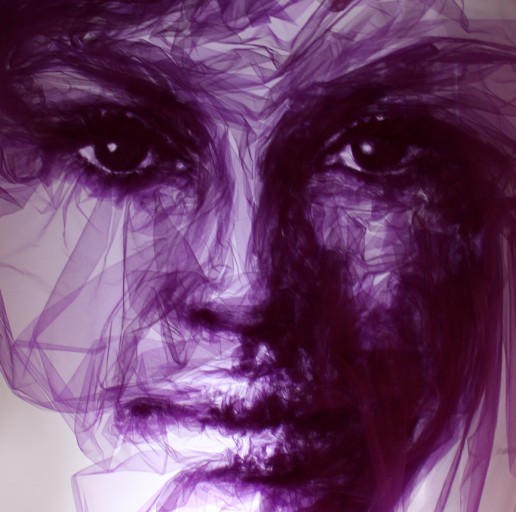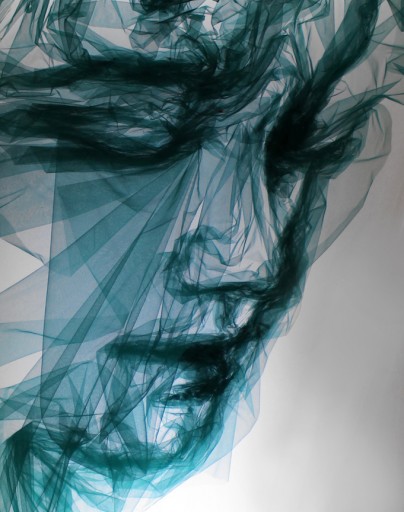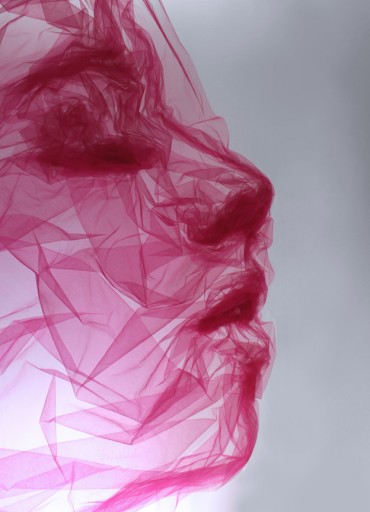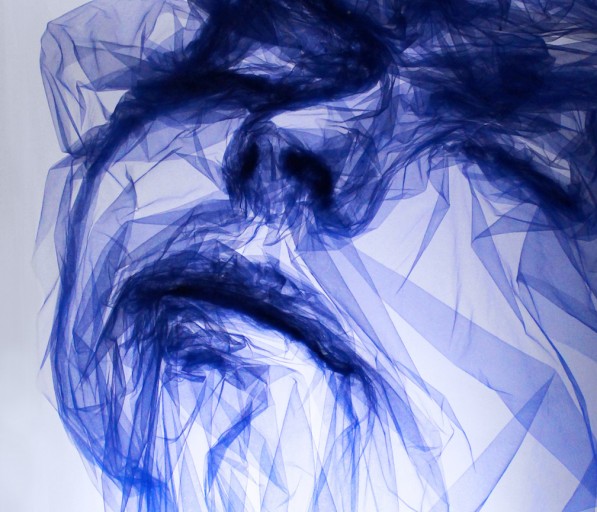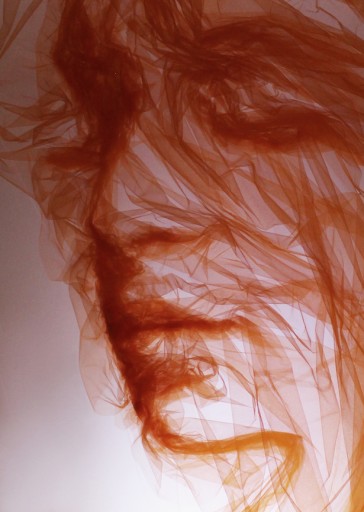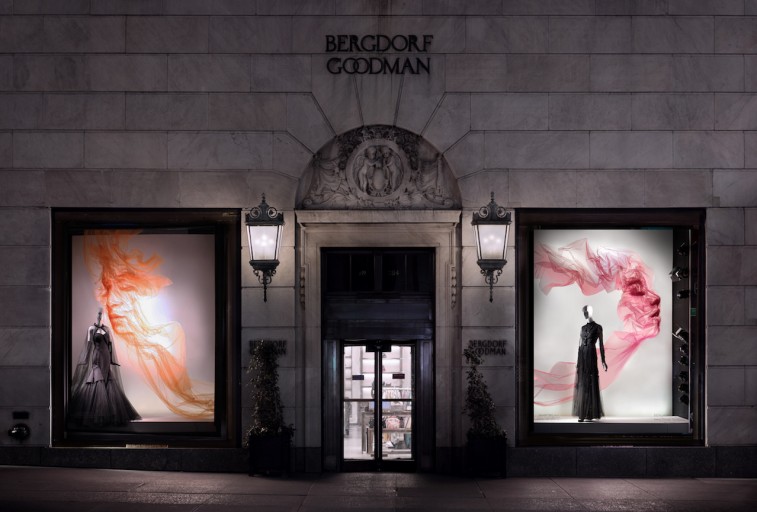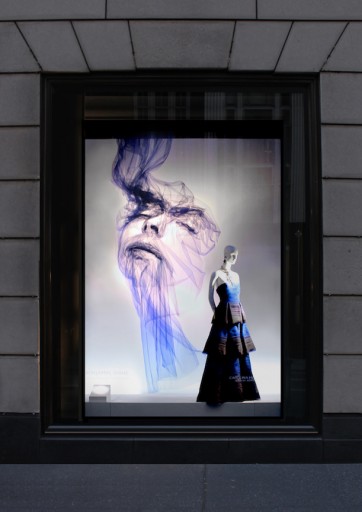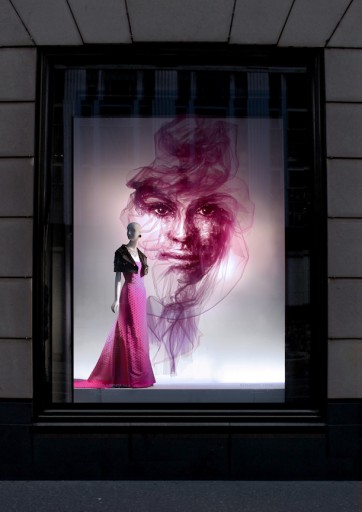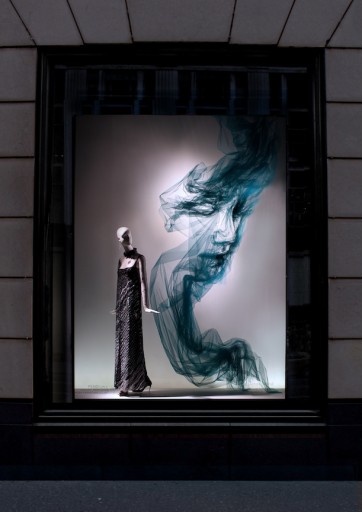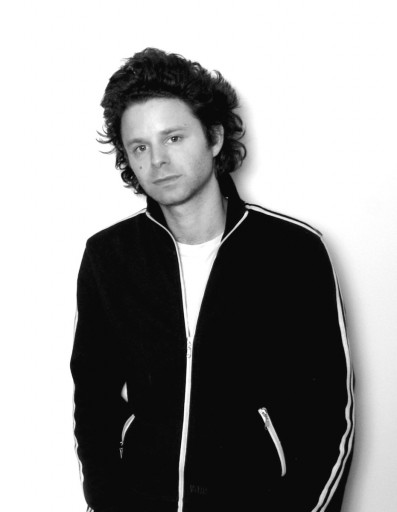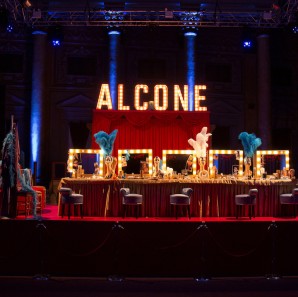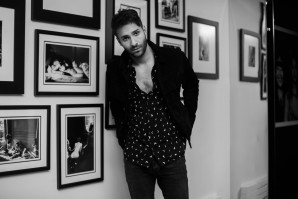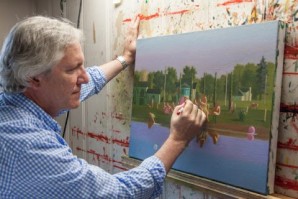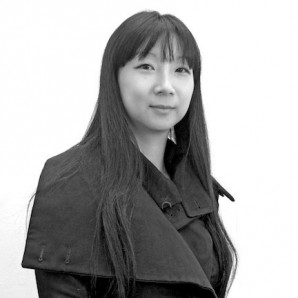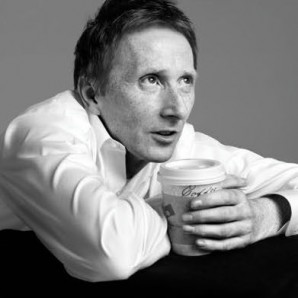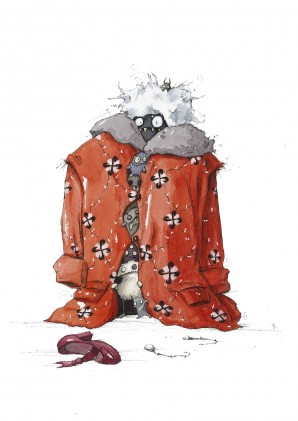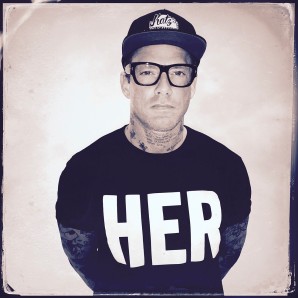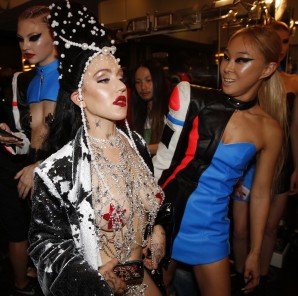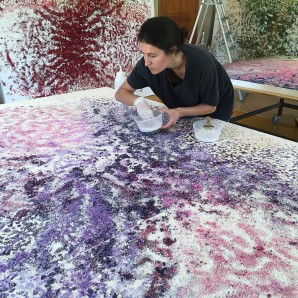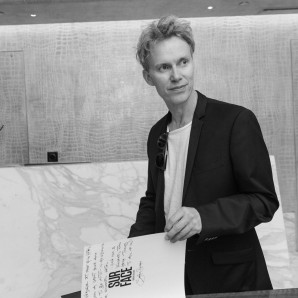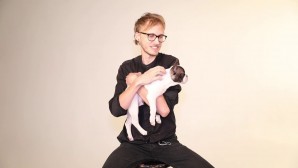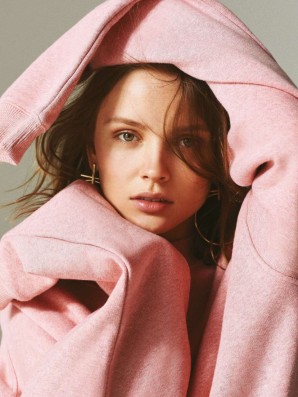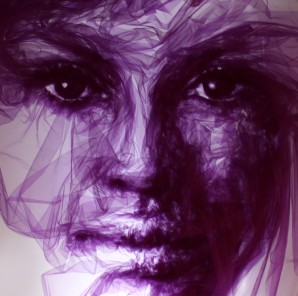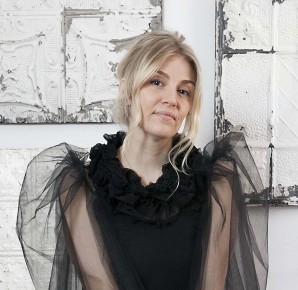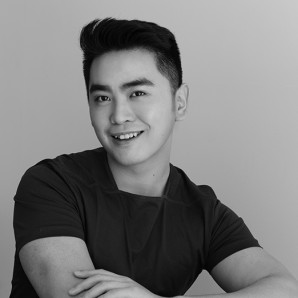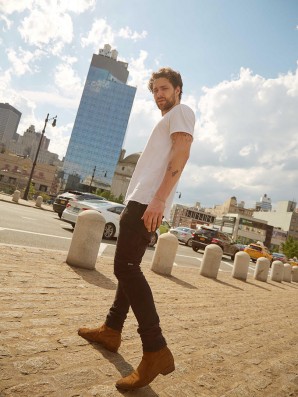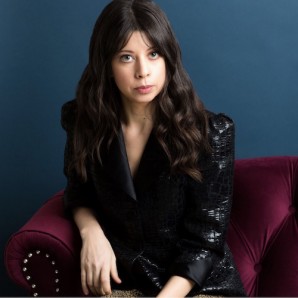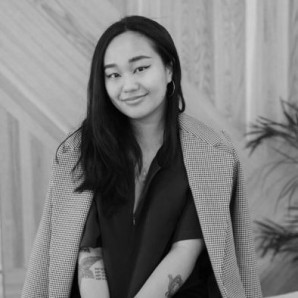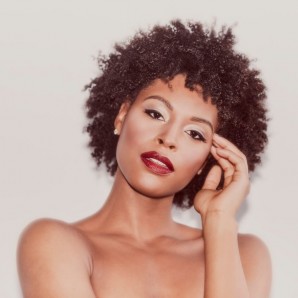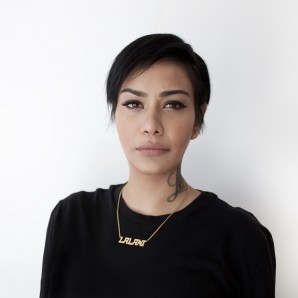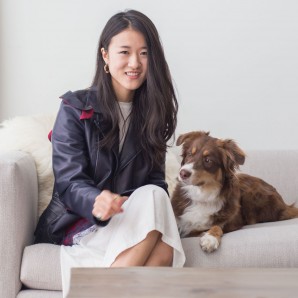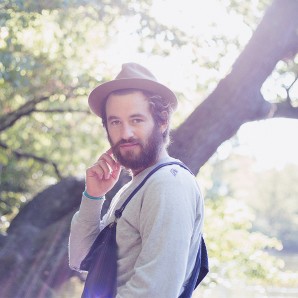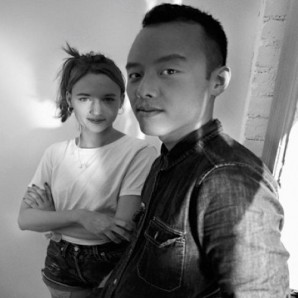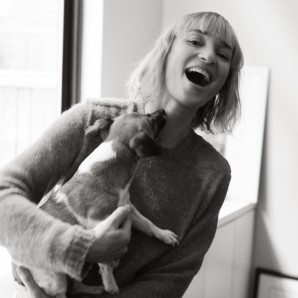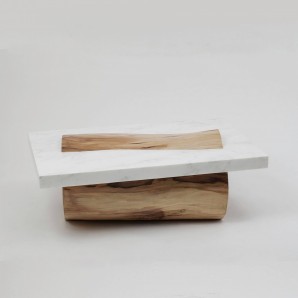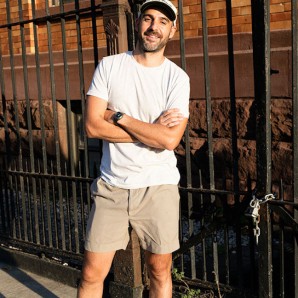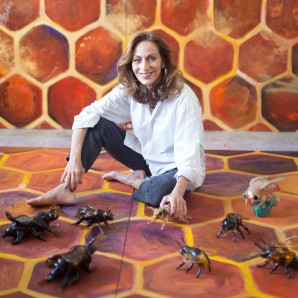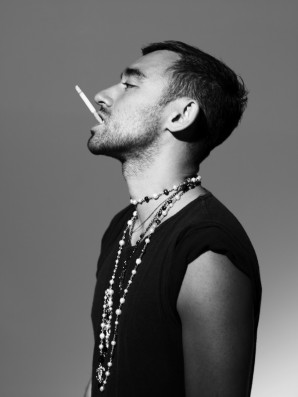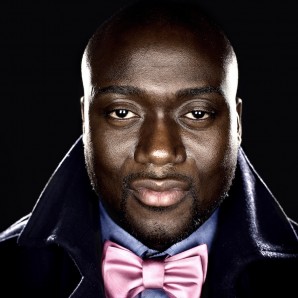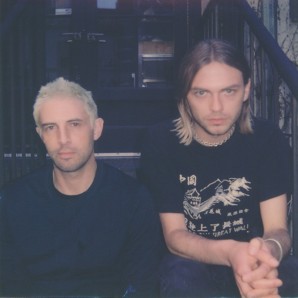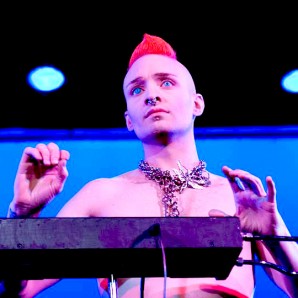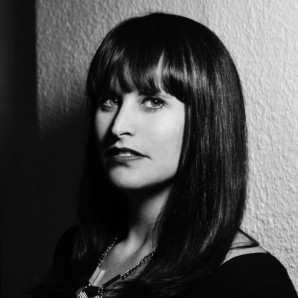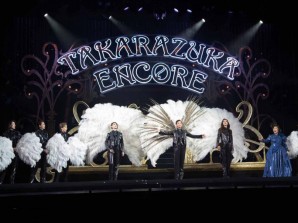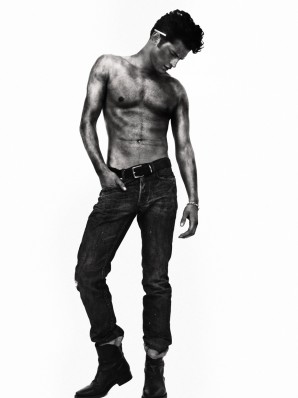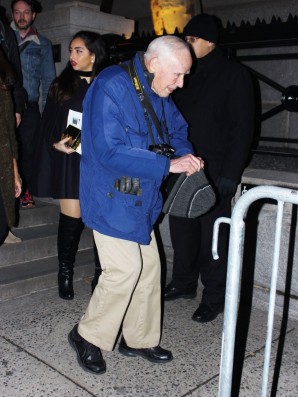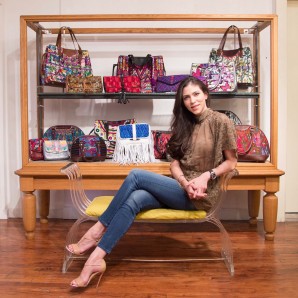No make-up company has a more storied history firmly ensconced in New York showbiz.
Benjamin Shine Interview: Master of Tulle
Benjamin Shine is an award-winning international artist whose work stretches across industries from fashion to product and interior design. Shine has collaborated with fashion heavy-hitters such as Riccardo Tisci while at Givenchy, John Galliano at Maison Margiela, and most recently, he has displayed an installation in the store windows of Bergdorf Goodman on Fifth Avenue in New York City. TWELV had the pleasure of sitting down with the distinguished artist for a discussion on his broader career and awe-inspiring tulle portraits.
1. Where are you from, and what’s the short story of how you began working with tulle?
Well, I’m originally from London. I studied at two different fashion colleges, the Surrey Institute of Art and Design and Central Saint Martens in London. I started to move into using fabric to paint with basically, and I was doing a lot of one piece garment construction, which I loved. I moved into creating pieces that were not on the body but more in a gallery or on a wall as sculptures. This idea of painting with fabric developed and I’m still intrigued by it. I’ve done a lot of product design over the years and invented a lot of things. This recent technique with the tulle– I say recent, but I invented it in 2008 or 2009– has developed beyond an invention or technique, really delving into how the medium can evoke more emotional concepts. I’ve really enjoyed doing that, and the fact that it has brought me back to where it started, back to fashion, is quite ironic but very satisfying too.
2. Where are you located now?
I’m based between London and Australia where I’ve lived for the last ten years, but I’ve recently relocated to New York where I’m working on a whole bunch of projects, possibly for the next two years.
3. For Paris Couture Week last year, your piece for the Margiela Artisanal Collection took everyone by storm. You’ve mentioned previously the challenge in using a walking model as your medium. Was this the first time you worked with movement in this capacity?
It was the first time that I’ve worked on the body– or back on the body– since designing anything as a garment. When I first started talking to John [Galliano] about it, I said, “This will be interesting because we will have a figure walking and the legs are going to be moving. It will be really nice to use that motion, because I’ve not done that before.” And the thing that we wanted to capture was this ethereal quality of it being suspended and almost floating off the coat. It’s not actually connected to the coat. It’s completely independently floating, so that was a challenge. I had been experimenting in Australia with a similar floating technique for an installation just prior to the Margiela piece, so I was able to develop that further.
4. What was the collaborative process like working with John Galliano and the Margiela team?
John’s team first reached out to me through my website which is often how I get requests to collaborate. We met in Paris in October of last year, which was about 4 or 5 months before the show, so we had quite a good amount of time to work out some ideas. He was very quick to identify what he liked about my work and what he wanted to retain in the piece that we were going to do together. I was very happy because we both stumbled upon the same basis, which was to create a piece of tulle on top of a white background. He presented to me a mock up with one of my pieces sort of photoshopped on top of a white coat. From there, he explained more of the concept and the type of face he wanted to portray.
John was incredibly generous and just the talent coming out of him was phenomenal. He sees every detail. We were keeping a record through photographs of the process as it developed, and he would often refer back to a previous photograph where maybe one part of the tulle was doing something slightly different than in the current version. From there, we would try and bring it back or improve it.
5. How many iterations did it take to reach the final piece?
There were lots of samples– probably half a dozen– that were very close to being the final one before we really got it down to the scale and perfection. It was quite a difficult thing to achieve– to make the face still feel organic and natural, instead of just plastered on. The biggest thing was that we had to make it feel like something fresh. There was a real eureka moment where we actually cut the back of the coat and had the classic Margiela idea, inside coming out. It related beautifully to the concept of my work which is so much about trying to shine the light on emotion within, and in a fashion context it’s really great because we’re always focused externally on what something looks like.
6. Do you plan to continue working with garments?
It will most likely be in a slightly different context as opposed to being directly on the body. I love working with the body but not necessarily on it. I like to relate it back to humans and the physical form. That will probably be developing in the coming years, I would say.
7. You use an iron and hand stitching in your technique. Were your methods discovered through experimentation?
I have my fashion background to thank for this technique. I’m not sure I would have ever picked up an iron if I hadn’t studied fashion, and I probably wouldn’t even know what tulle was! While studying at Saint Martins, I would walk down Brick Lane in London to get to the tube to go to school, and there were fabric shops all along the way. One of them was this cheap fabric store that had tulle in bulk from floor to ceiling in every single color. I would walk past that shop every morning and think, “I have to do something with tulle someday. It’s readily available, it’s cheap, and you can do stuff in scale with it.” But it literally did not click for eight years before I even picked it up.
8. So when did the idea click?
In my studio, I saw a crumpled piece of tulle, and I just thought that there are a lot of tones going on here, and it’d be very interesting if these could be arranged in a way that created something recognizable or identifiable. I picked up a piece and started trying to figure it out. I would hold it up in the air and let it fall back down, just trying to imagine, moving it around, and adjusting it into some sort of shape. I picked up some special bonding glue from my fashion days, took the iron, and bonded it, and it held its shape.From there, I realized that was the way I could actually construct these things.
But I decided to add one extra rule, which was to create them out of one piece of tulle. That was what made the challenge and what made it much more interesting and sort of poetic that it was always a single piece of fabric, along with the limitations of that one piece. But I’ve decided to break that rule…
9. It’s fantastic! The tulle seems to defy gravity, almost in a mystical way.
I think I discovered the same sort of sensibility of that material, and in all honesty there are things I’m doing now that I hope will come out in the next two years which I feel encapsulate that idea even more so. I think it will really build on the idea of energy, the flow of energy, and that everything is made of energy. I love that concept.
10. You’re right at the junction of art and fashion. How do you approach the differences in commercialization of those worlds?
Today, I think there’s so much more interest in the artistry of things. In relation to the amount of content that we’re all exposed to, there’s almost an expectation or demand to have better, more artistic work, even at the commercial level. It’s becoming very important even for those commercial brands to be able to offer something interesting to people. Maybe that has to do with the competitive nature of how things are today. I feel the stigma of what is commercial and what is not is reduced, because it’s almost just about the work now. It doesn’t matter even in a commercial setting. All the rules have changed. Now, there’s so many outlets for people to just see it and give real, true feedback through all these social media channels. No one is in charge anymore except the creative people putting it together, publishing it, and seeing what the organic natural response to it is, which is brilliant. It’s great. It’s so liberating.
Having just done this project at Bergdorf Goodman, some might say it’s not good for an artist to exhibit an installation in the windows of a commercial place like that, even though it’s so prestigious in its industry. And I don’t feel that’s true. If the work is strong, it will hold itself and people will recognize it for what it is, regardless of the setting.
11. Collaborating with John Galliano, it seems you quickly saw eye to eye. Was the experience with Bergdorf Goodman any different?
To be honest, it was quite a restricting situation to be in, because Bergdorf has guidelines that they know work. I would often find myself in positions saying, “Well, why don’t we try this.” I think I may have gone through fifteen or twenty concepts that were really extreme actually, but they were not able to go with those. I had to assess what the limitations were and then try to make it work with a concept that I felt really comfortable and enthusiastic about.
One thing was reducing the mannequin number down to one. That was a challenge, but I wanted to retain the minimalism that works well with my work. It wouldn’t be so great to have five mannequins in the window, and they were brilliant in that respect.
I was very happy to go with this concept, which was shining a spotlight on that duality between the spiritual and the superficial. On the one hand, you see something in the window that’s clearly geared toward the superficial and materialistic in terms of the fashion, which is a very well-known brand. But my piece sort of hovering behind acts as a reminder to not lose ourselves, to not lose the sense of ourselves through the seduction of beautiful things.
12. Many of your projects have been connected to philanthropic causes from the fight against AIDS and cancer to elephant conservation. Is this important to you?
Basically, it all goes back to my days studying fashion design. Just the designer’s mentality that you want to create something that is purposeful and do something that is useful. That’s always stayed with me. If I can pair my work or link it to something that will give it some new purpose or value, then I will always try to do that.
13. What should we expect from you in the future?
At the moment, I’m focusing predominantly on a few projects which are going to be taking the concepts further, a bit more out there, which I’m excited about. Some of it will also be going in a slightly more abstract territory as well, a little less on the figurative side. There’s lots of exciting things, and I’ll still be based in New York where the majority of these future projects will be taking shape!
EDITED FOR CLARITY
INTERVIEW BY HOLLIS DE LANEY
PHOTO CREDIT: BENJAMIN SHINE
related posts
Alcone 65th Anniversary @Capitale: Interview with CEO Maria Stewart
Ikemen #35: Zaher Saleh
IKEMEN (ē´k´mɛn): Japanese Slang
"REALLY, REALLY, RIDICULOUSLY GOOD LOOKING PEOPLE"
Interview: Neurosurgeon-turned-Artist Keith Kattner on the Surgery of Classical Painting
Dr. Keith Kattner does not have the typical background one would expect of a successful neurosurgeon.
New Type #27: Nika Tang Interview
San Fransisco-based designer Nika Tang has emerged as boldly committed to her ideology as to her pieces. Her namesake brand centers...
Interview: Becky Donnelly's Fashion Creatures
Quirky girl from Dublin with a penchant for drawing fantasy creatures relocates to London after art school.
Kaimin Interview & S/S18 "Slut from the Future" Presentation @ the Top of the Standard
Pulsing with a heavy beat and hazy with a deep rouge glow, the Top of the Standard is as glamorous a place to be as ever. And tonight it is packed with partygoers.
Yasmina Alaoui Interview & Opera Gallery Exhibition
Yasmina Alaoui burst onto the international arts scene in 2003 with "Tales of Beauty," a collection of nude...
Søren Solkær Interview
Stepping out of a cab into the urban symphony of Midtown, the entryway to The Quin Hotel was easy to spot— with classic architecture and...
Kyra Ross of Mona Liza Studios Interview
TWELV sat down with the charismatic Kyra Ross, founder of Mona Liza Studios which falls under his larger moniker "...
Ira Sumbaeva Interview
TWELV sits down with model Ira Sumbaeva to give a glimpse into the story of the cutest Belarusian...
Benjamin Shine Interview: Master of Tulle
Benjamin Shine is an award-winning international artist whose work stretches across industries from fashion...
New Type #25: Mémère – Sarah LeBlanc Interview
Upon arriving to the Mémère studio, it felt like stepping from the bustle of New York City...
IKEMEN #34: GABRIEL LIBERTY
IKEMEN (ē´k´mɛn): Japanese Slang
"REALLY, REALLY, RIDICULOUSLY GOOD LOOKING PEOPLE"
NEW TYPE #23: ANE AMOUR – IYALA ANNE INTERVIEW
“Introducing a talented designer giving sophisticated femininity an edge”
NEW TYPE #22: Allina Liu INTERVIEW
Born and raised in New York City– we could also add, "in love with”– Allina Liu is a refreshing womenswear designer, who questions the...
NEW TYPE #21: Kendall Miles INTERVIEW
“My passion is shoes. Kendall Miles shoes are beautiful, alluring and handcrafted in Italy: the perfect pair for the woman who knows who she is and where she wants to go.”
NEW TYPE #20: Shahista Lalani INTERVIEW
"Introducing an emerging designer creating captivating leather fashions."
NEW TYPE #19: PAMPLEMOUSSE - Danica Zheng Interview
“Introducing a dedicated, innovative designer to awaken every woman’s inner voice.”
NEW TYPE #18: BOOM DONE SHOP - LIAM BERGIN INTERVIEW
“Introducing the new hot British ethical apparel brand BOOM DONE SHOP”
NEW TYPE #17: NAMILA - NAN LI AND EMILIA PFOHL INTERVIEW
NAMILIA was founded in 2015 by Berlin based designers Nan Li and Emilia Pfohl. The duo met while attending University of the Arts Berlin.
Isabel Dupre Interview
Isabel Dupre Interview is now available!
Check inside for the Full Page Interview.
IKEMEN #33: DANIEL VIEDMA
IKEMEN (ē´k´mɛn): Japanese Slang
"REALLY, REALLY, RIDICULOUSLY GOOD LOOKING PEOPLE"
Judi Harvest INTERVIEW
“We’re all bees, we need to dance more and always search for beauty,” Judi Harvest proclaims.
BEHIND THE SCENES #4: Nicola Formichetti
TWELV's Behind the Scenes takes a step back and visits the masterminds behind the camera.
IKEMEN #32: TERRY DOE
IKEMEN (ē´k´mɛn): Japanese Slang
"REALLY, REALLY, RIDICULOUSLY GOOD LOOKING PEOPLE"
Name: TERRY DOE
NEW TYPE #16: LINDER - SAM LINDER AND KIRK MILLAR INTERVIEW
“Introducing a new generation of quick and fresh minded designers”
IKEMEN #31: CORNELIUS LOY
IKEMEN (ē´k´mɛn): Japanese Slang
"REALLY, REALLY, RIDICULOUSLY GOOD LOOKING PEOPLE"
Takarazuka CHICAGO Cast Members Interview
“All Japanese, All Women, All that Jazz! We interviewed three cast members of Takarazuka CHICAGO who preformed in the Lincoln Center Festival in 2016.
Sean O’Pry EXCLUSIVE INTERVIEW "Good Ol’ Georgia Boy”
SEAN O’PRY EXCLUSIVE INTERVIEW
"GOOD OL’ GEORGIA BOY”
R.I.P. Bill Cunningham
Bill Cunningham, Iconic Street Style Photographer, Passes away at 87
NEW TYPE #14: Alida Boer - Alida Boer Interview
TWELV Magazine sat down with Alida Boer in NYC to get to know the designer and better understand the intricacies of her designs and company’s mission.

